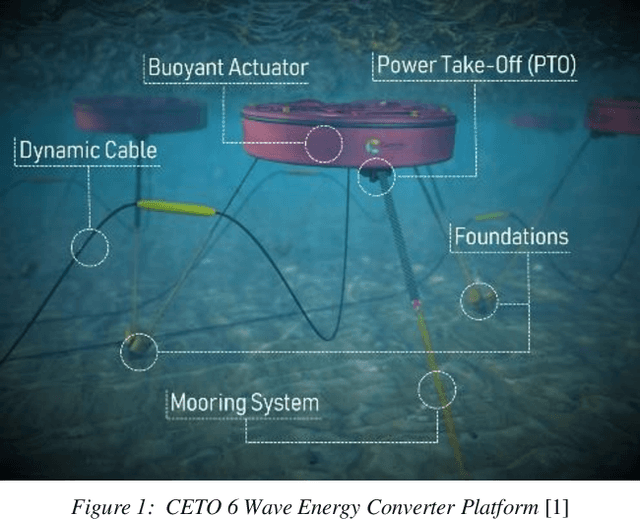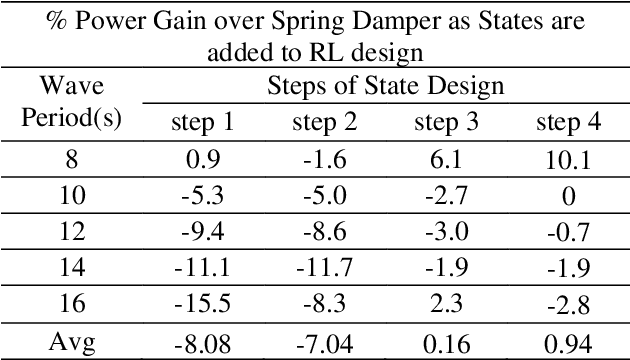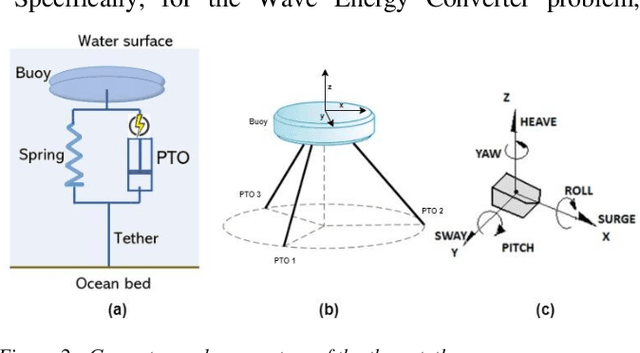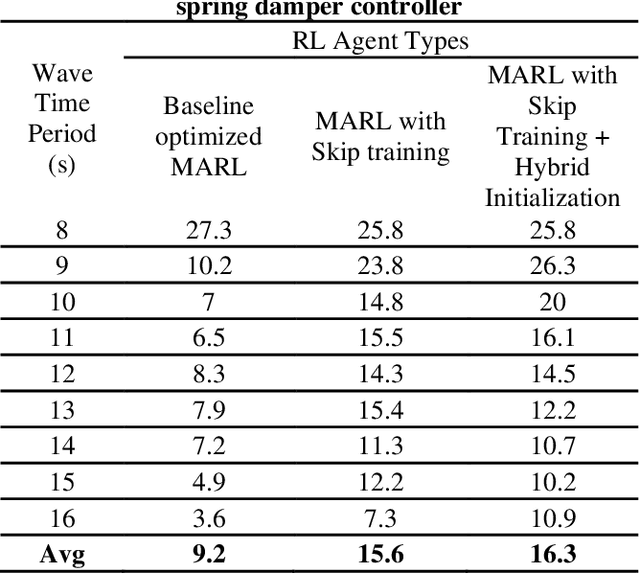Mathieu Cocho
Function Approximation for Reinforcement Learning Controller for Energy from Spread Waves
Apr 17, 2024



Abstract:The industrial multi-generator Wave Energy Converters (WEC) must handle multiple simultaneous waves coming from different directions called spread waves. These complex devices in challenging circumstances need controllers with multiple objectives of energy capture efficiency, reduction of structural stress to limit maintenance, and proactive protection against high waves. The Multi-Agent Reinforcement Learning (MARL) controller trained with the Proximal Policy Optimization (PPO) algorithm can handle these complexities. In this paper, we explore different function approximations for the policy and critic networks in modeling the sequential nature of the system dynamics and find that they are key to better performance. We investigated the performance of a fully connected neural network (FCN), LSTM, and Transformer model variants with varying depths and gated residual connections. Our results show that the transformer model of moderate depth with gated residual connections around the multi-head attention, multi-layer perceptron, and the transformer block (STrXL) proposed in this paper is optimal and boosts energy efficiency by an average of 22.1% for these complex spread waves over the existing spring damper (SD) controller. Furthermore, unlike the default SD controller, the transformer controller almost eliminated the mechanical stress from the rotational yaw motion for angled waves. Demo: https://tinyurl.com/yueda3jh
* IJCAI 2023, Proceedings of the Thirty-Second International Joint Conference on Artificial IntelligenceAugust 2023
Skip Training for Multi-Agent Reinforcement Learning Controller for Industrial Wave Energy Converters
Sep 13, 2022



Abstract:Recent Wave Energy Converters (WEC) are equipped with multiple legs and generators to maximize energy generation. Traditional controllers have shown limitations to capture complex wave patterns and the controllers must efficiently maximize the energy capture. This paper introduces a Multi-Agent Reinforcement Learning controller (MARL), which outperforms the traditionally used spring damper controller. Our initial studies show that the complex nature of problems makes it hard for training to converge. Hence, we propose a novel skip training approach which enables the MARL training to overcome performance saturation and converge to more optimum controllers compared to default MARL training, boosting power generation. We also present another novel hybrid training initialization (STHTI) approach, where the individual agents of the MARL controllers can be initially trained against the baseline Spring Damper (SD) controller individually and then be trained one agent at a time or all together in future iterations to accelerate convergence. We achieved double-digit gains in energy efficiency over the baseline Spring Damper controller with the proposed MARL controllers using the Asynchronous Advantage Actor-Critic (A3C) algorithm.
 Add to Chrome
Add to Chrome Add to Firefox
Add to Firefox Add to Edge
Add to Edge